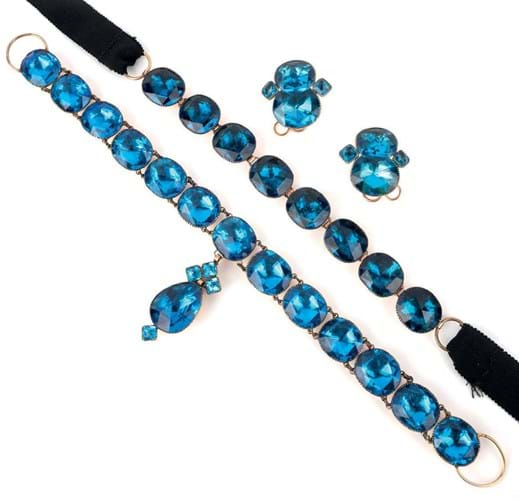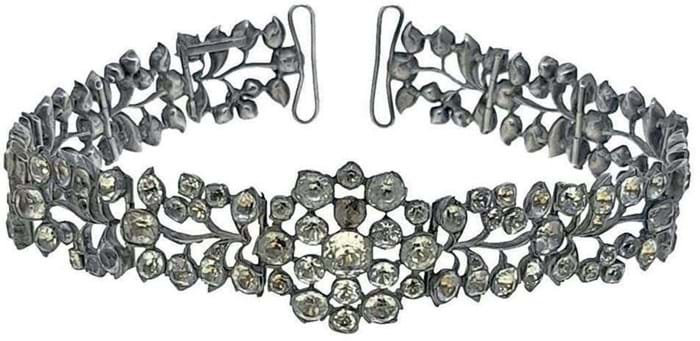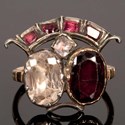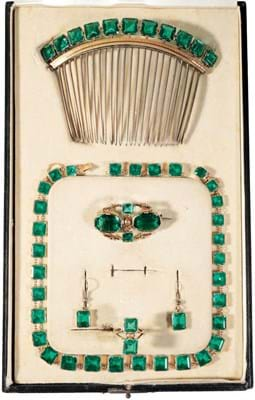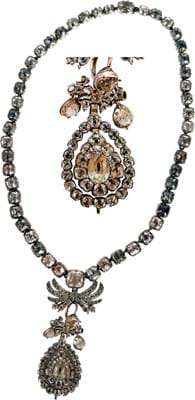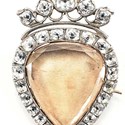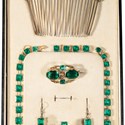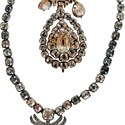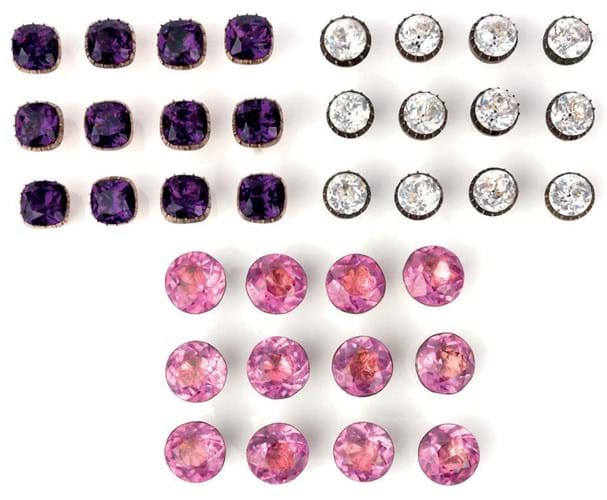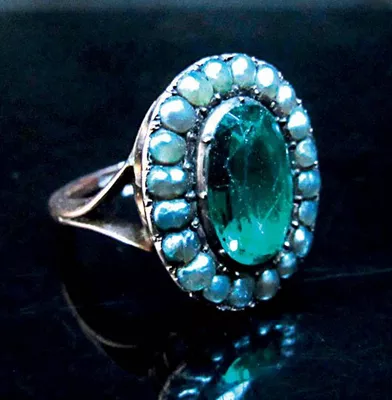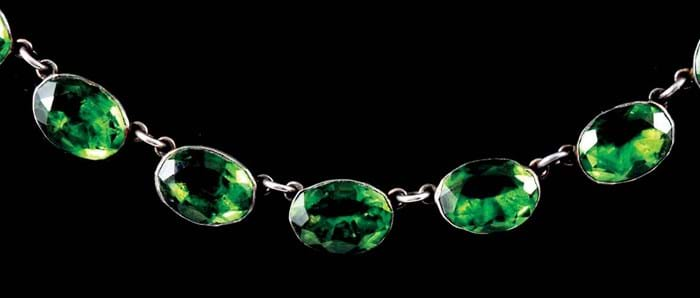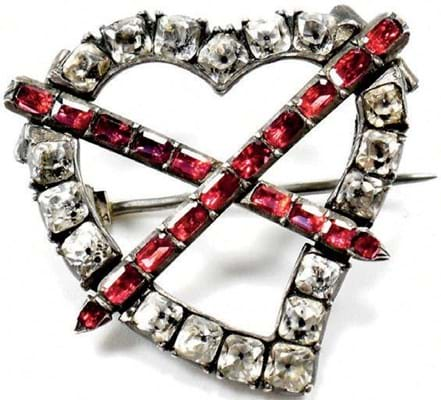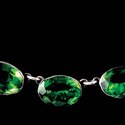Aided by the skills of Alsatian jeweller Georges-Frédéric Strass, the boundaries of what could be achieved with paste were pushed back in the 18th century.
It was Strass (1701-77) who cornered the market for artificial gemstones at the French court, creating ‘diamonds’ first from rock crystal gathered from the Rhine (hence the name ‘rhinestone’) and then from leaded glass.
When treated with chemicals and backed with foil to add colour and shine – and sometimes with the addition of a black dot painted on its culet to give it a sense of depth – paste became hugely important in Georgian jewellery.
Replicating the brilliance of the best and rarest precious stones at a fraction of a cost, it could help with security (travelling with jewellery was notoriously risky) and proved an art form in its own right.
Much of it was finely made by specialists or by the same craftsmen who worked with gemstones. The workmanship in the best pieces can be exceptional, as good as that used in precious jewellery.
Collecting possibilities
In collecting terms, Georgian paste offers great possibilities.
It is an art form in its own right and the ultimate expression of design and craftsmanship over intrinsic value. While many 18th and early 19th century precious jewels were broken up for their stones and reset in more fashionable styles, paste has a much better survival rate.
And, says Woolley & Wallis jewellery specialist Marielle Whiting, “at a time when there is much less formality in dress, there can be a certain reassurance in knowing that the bracelet on your wrist cost £1000 rather than £10,000. In that sense it fulfils much the same purpose now as it did in the 18th century.”
Today the best pieces can bring some surprising sums.
A Georgian ’Queen Anne’ paste parure offered at Woolley & Wallis (25% buyer’s premium) on February 1-2 dated from the second quarter of the 18th century. It comprised a necklace suspending a pendant, with hoops for fastening via a ribbon, a similar bracelet and a pair of earrings each set in gilt metal with vibrant ‘peacock blue’ stones.
That a similar pendant drop necklace with deep blue stones sold a year ago at Catherine Southon for £3900 did make the £200-300 estimate on this Salisbury set look a little lightweight. And so it proved when the suite was sold to a dealer at a mighty £20,000.
The key here was condition. “We have sold a lot of paste jewels but nothing as good as that,” adds Whiting. “The colour in the catalogue photograph was the colour of the stones. Sometimes Georgian paste can fade or ‘grey’ with moisture. Here the foiling was intact and the colour a really vibrant blue.”
The parure was part of a remarkable single-owner collection of antique ‘costume’ jewellery from the deceased estate of a dealer (more is on offer in W&W’s April sale). Most were offered with the sort of low expectations that pull in bidders.
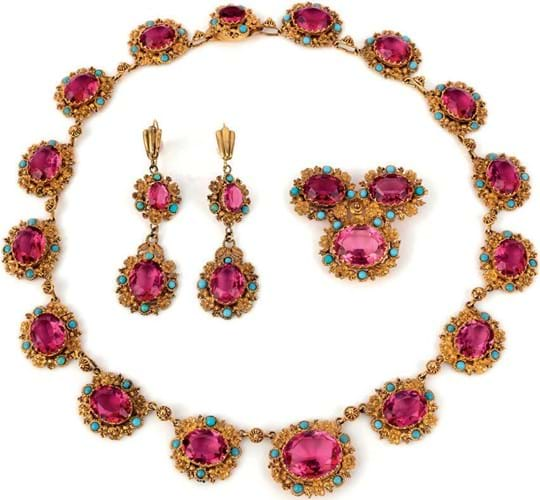
Georgian parure set with pink and opaque blue paste in gilt metal, £3000 at Woolley & Wallis, Salisbury, February 1-2.
From the same source was a later parure from the 1830s, comprising necklace, brooch and earrings, each set in floral gilt metal mounts with oval pink paste stones and opaque blue paste cabochons imitating turquoise. It sold at £3000 via thesaleroom.com.
On the button
Georgian paste buttons – worn by both ladies and gentlemen – were often converted to brooches, rings, pendants, and earrings in the Victorian and later eras. Sets in original condition are not easy to find. Sold here at £2800 were three sets of late 18th century buttons, each comprising 12 studs, in pink, purple and colourless glass.
These and other recently sold items of Georgian paste jewellery are pictured here.


